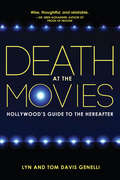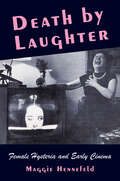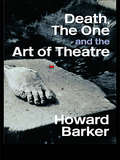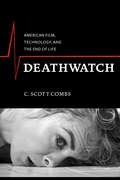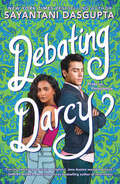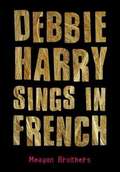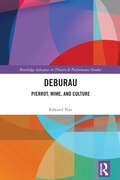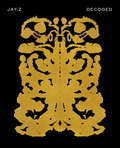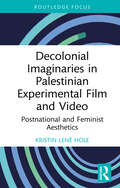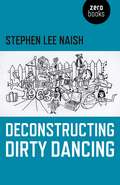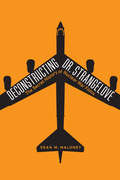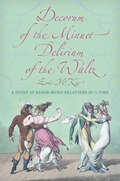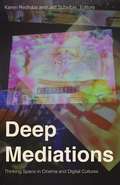- Table View
- List View
Death Lines: Walking London's Horror History
by Lauren BarnettThe first walking guide to London&’s role in the evolution of horror cinema, inspired by the city&’s dark histories and labyrinthine architectures.Death Lines is the first walking guide to London&’s role in the evolution of horror cinema, inspired by the city&’s dark histories, labyrinthine architectures, atmospheric streetscapes, and uncanny denizens. Its eight walks lead you on a series of richly researched yet undeniably chilling tours through Chelsea, Notting Hill, Westminster, Bloomsbury, Covent Garden, and the East End, along the haunted banks of the river Thames, and down into the depths of the London Underground railway. Each tour weaves together London&’s stories and takes the reader to magnificent, eerie, and sometimes disconcertingly ordinary corners of the city, unearthing the literature, legends, and history behind classics like Peeping Tom and An American Werewolf in London, and lesser-known works such as mind-control melodrama The Sorcerers; Gorgo, Britain&’s answer to Godzilla; tube terror Death Line; and Bela Lugosi's mesmeric vehicle The Dark Eyes of London. Tinged with humor, social critique, and more than a few scares, Death Lines delights in revealing the hidden and often surprising relationship between the city and the dark cinematic visions it has evoked. Whether read on the streets or from the comfort of the grave, Death Lines is a treat for all cinephiles, horror fans, and lovers of London lore.
Death Punch'd: Surviving Five Finger Death Punch's Metal Mayhem
by Jeremy SpencerA fascinating inside account of one of the most successful heavy metal bands of the past decade and a revealing personal journey through the wild highs and terrifying lows of rock 'n' roll from the cofounder of Five Finger Death Punch, Jeremy Spencer"Everything, including success, comes with a price."Hailed by the New York Times as "one of the most unexpectedly consistently popular bands," Five Finger Death Punch has become the heavyweight champ of the metal scene. In this soulful, inspiring, and entertaining memoir, Jeremy Spencer, the band's cofounder and drummer, takes us behind the scenes, on tour, and into the studio to tell the band's raucous story and his own.Death Punch'd is a detailed in-depth account of the group's origins and influences. With fierce honesty and self-deprecating playfulness, Jeremy details cutting the band's first demo and hitting the road to tour the world, providing snapshots of a life fueled by sex, booze, drugs, and a thrashing metal sound. He also reveals the fighting and tensions among highly opinionated musicians that grew increasingly out of control—battles that created both intense drama and the music fans love.In addition to pulling back the curtain on the band, Death Punch'd tells Jeremy's personal hard-charging, laugh-out-loud tale of how he left small-town Indiana with $150 in his pocket and rose to rock royalty—and how he nearly destroyed it all for a good time. Jeremy takes us back to his childhood in the eighties, introduces us to his down-to-earth family, and recalls adolescent exploits and a journey to addiction that landed him in rehab at sixteen—dangerous behavior that became bigger, bolder, and badder until Jeremy bottomed out before it was too late.Told in his unique, darkly humorous voice, filled with Jeremy's twisted take on how his rock 'n' roll dream turned nightmare, and including dozens of photos, Death Punch'd is a lively, no-holds-barred ride as well as a sincere and inspiring cautionary tale to help anyone who is struggling to battle demons and addictions of their own.
Death at the Movies
by Tom Davis Genelli Lyn Davis GenelliIt's a Wonderful Life (1946), Resurrection (1980), Poltergeist (1982), Beetlejuice (1988), Ghost (1990), Groundhog Day (1993), The Sixth Sense (1999) -- these are only a few of the influential movies in recent decades dealing with the afterlife. But beyond entertainment, do they mean anything? The authors of this wise and well-informed guide believe so. They explore how popular motion pictures, from Outward Bound (1930) to Hereafter, play a perhaps unconscious role in guiding humanity toward its evolutionary comprehension of the meaning and purpose of death. They draw on the Tibetan Book of the Dead, Buddhism, and depth psychology to review some of the most spiritually powerful films ever made. Death is, say the authors, at once the most immediate locked door and the ultimate frontier, a staggering paradox that invites us to search for deeper understanding based upon a level of consciousness beyond thought. After reading this book, you'll never view Casablanca or The Wizard of Oz the same way again.
Death at the Movies
by Tom And GenelliIt's a Wonderful Life (1946), Resurrection (1980), Poltergeist (1982), Beetlejuice (1988), Ghost (1990), Groundhog Day (1993), The Sixth Sense (1999) - these are only a few of the influential movies in recent decades dealing with the afterlife. But beyond entertainment, do they mean anything? The authors of this wise and well-informed guide believe so. They explore how popular motion pictures, from Outward Bound (1930) to Hereafter, play a perhaps unconscious role in guiding humanity toward its evolutionary comprehension of the meaning and purpose of death. They draw on the Tibetan Book of the Dead, Buddhism, and depth psychology to review some of the most spiritually powerful films ever made. Death is, say the authors, at once the most immediate locked door and the ultimate frontier, a staggering paradox that invites us to search for deeper understanding based upon a level of consciousness beyond thought. After reading this book, you'll never view Casablanca or The Wizard of Oz the same way again.
Death by Laughter: Female Hysteria and Early Cinema (Film and Culture Series)
by Maggie HennefeldCan you really die from laughing too hard? Between 1870 and 1920, hundreds of women suffered such a fate—or so a slew of sensationalist obituaries would have us believe. How could laughter be fatal, and what do these reports of women’s risible deaths tell us about the politics of female joy?Maggie Hennefeld reveals the forgotten histories of “hysterical laughter,” exploring how women’s amusement has been theorized and demonized, suppressed and exploited. In nineteenth-century medicine and culture, hysteria was an ailment that afflicted unruly women on the cusp of emotional or nervous breakdown. Cinema, Hennefeld argues, made it possible for women to laugh outrageously as never before, with irreversible social and political consequences. As female enjoyment became a surefire promise of profitability, alarmist tales of women laughing themselves to death epitomized the tension between subversive pleasure and its violent repression.Hennefeld traces the social politics of women’s laughter from the heyday of nineteenth-century sentimentalism to the collective euphoria of early film spectatorship, traversing contagious dancing outbreaks, hysteria photography, madwomen’s cackling, cinematic close-ups, and screenings of slapstick movies in mental asylums. Placing little-known silent films and an archive of remarkable, often unusual texts in conversation with affect theory, comedy studies, and feminist film theory, this book makes a timely case for the power of hysterical laughter to change the world.
Death in Venice
by Will AitkenA Queer Film Classic on Luchino Visconti's lyrical and controversial 1971 film based on Thomas Mann's novel about a middle-aged man (played by Dirk Bogarde) vacationing in Venice who becomes obsessed with a youth staying at the same hotel as a wave of cholera descends upon the city. The book analyzes its cultural impact and provides a vivid portrait of the director, an ardent Communist and grand provocateur.Will Aitken's novels include Realia and Terre Haute. Arsenal's Queer Film Classics series cover some of the most important and influential films about and by LGBTQ people.
Death in Winterreise
by Lauri SuurpääLauri Suurpää brings together two rigorous methodologies, Greimassian semiotics and Schenkerian analysis, to provide a unique perspective on the expressive power of Franz Schubert's song cycle. Focusing on the final songs, Suurpää deftly combines textual and tonal analysis to reveal death as a symbolic presence if not actual character in the musical narrative. Suurpää demonstrates the incongruities between semantic content and musical representation as it surfaces throughout the final songs. This close reading of the winter songs, coupled with creative applications of theory and a thorough history of the poetic and musical genesis of this work, brings new insights to the study of text-music relationships and the song cycle.
Death, Image, Memory
by Piotr CieplakThis book explores how photography and documentary film have participated in the representation of the 1994 genocide in Rwanda and its aftermath. This in-depth analysis of professional and amateur photography and the work of Rwandan and international filmmakers offers an insight into not only the unique ability of images to engage with death, memory and the need for evidence, but also their helplessness and inadequacy when confronted with the enormity of the event. Focusing on a range of films and photographs, the book tests notions of truth, evidence, record and witnessing - so often associated with documentary practice - in the specific context of Rwanda and the wider representational framework of African conflict and suffering. Death, Image, Memory is an inquiry into the multiple memorial and evidentiary functions of images that transcends the usual investigations into whether photography and documentary film can reliably attest to the occurrence and truth of an event.
Death, The One and the Art of Theatre
by Howard BarkerDeath, The One and the Art of Theatre is the latest collection of Barkers distinctive and revelatory philosophical musings on theatre. It is a stunning array of speculations, deductions, prose poems and poetic aperçus that casts a unique and unflinching light on the nature of tragedy, eroticism, love and theatre. Exploring the juncture between aesthetics and metaphysics, the book looks at the human experience of love and death as life at its most intrinsically theatrical. Howard Barker is an internationally renowned playwright whose works are regularly produced throughout Europe and the US. He is widely known for his controversial explorations into contemporary tragedy and his anti-Brechtian focus on the irrational and the catastrophic. He is often credited as a major influence on the generation of playwrights that includes Sarah Kane. Death, The One and the Art of the Theatre is a profoundly unsettling and inspiring piece of writing and extends the challenge to orthodox morality that Barker first presented in Arguments for a Theatre, a challenge he describes as men and womens secret longing for the incomprehensible nature of pain.
Deaths in Venice: The Cases of Gustav von Aschenbach (Leonard Hastings Schoff Lectures)
by Philip KitcherPublished in 1913, Thomas Mann's Death in Venice is one of the most widely read novellas in any language. In the 1970s, Benjamin Britten adapted it into an opera, and Luchino Visconti turned it into a successful film. Reading these works from a philosophical perspective, Philip Kitcher connects the predicament of the novella's central character to Western thought's most compelling questions. In Mann's story, the author Gustav von Aschenbach becomes captivated by an adolescent boy, first seen on the lido in Venice, the eventual site of Aschenbach's own death. Mann works through central concerns about how to live, explored with equal intensity by his German predecessors, Schopenhauer and Nietzsche. Kitcher considers how Mann's, Britten's, and Visconti's treatments illuminate the tension between social and ethical values and an artist's sensitivity to beauty. Each work asks whether a life devoted to self-sacrifice in the pursuit of lasting achievements can be sustained and whether the breakdown of discipline undercuts its worth. Haunted by the prospect of his death, Aschenbach also helps us reflect on whether it is possible to achieve anything in full awareness of our finitude and in knowing our successes are always incomplete.
Deathwatch
by C. Scott CombsThe first study to unpack American cinema's long history of representing death
Deathwatch: American Film, Technology, and the End of Life
by Combs C. ScottThe first study to unpack American cinema's long history of representing death
Deathwatch: American Film, Technology, and the End of Life (Film and Culture Series)
by C. Scott CombsThe first book to unpack American cinema's long history of representing death, this work considers movie sequences in which the process of dying becomes an exercise in legibility and exploration for the camera. Reading attractions-based cinema, narrative films, early sound cinema, and films using voiceover or images of medical technology, C. Scott Combs connects the slow or static process of dying to formal film innovation throughout the twentieth century. He looks at Thomas Edison's Electrocuting an Elephant (1903), D. W. Griffith's The Country Doctor (1909), John Ford's How Green Was My Valley (1941), Billy Wilder's Sunset Boulevard (1950), Stanley Kubrick's 2001: A Space Odyssey (1968), and Clint Eastwood's Million Dollar Baby (2004), among other films, to argue against the notion that film cannot capture the end of life because it cannot stop moving forward. Instead, he shows how the end of dying occurs more than once and in more than one place, understanding death in cinema as constantly in flux, wedged between technological precision and embodied perception.
Debating Darcy
by Sayantani DasGuptaThis Pride & Prejudice retelling brings New York Times bestselling Sayantani DasGupta’s trademark wit and insight to her bright and funny YA debut!It is a truth universally acknowledged that Leela Bose plays to win.A life-long speech competitor, Leela loves nothing more than crushing the competition, all while wearing a smile. But when she meets the incorrigible Firoze Darcy, a debater from an elitist private school, Leela can’t stand him. Unfortunately, he’ll be competing in the state league, so their paths are set to collide. But why attempt to tolerate Firoze when Leela can one-up him? The situation is more complicated than Leela anticipated, though, and her participation in the tournament reveals that she might have tragically misjudged the debaters -- including Firoze Darcy -- and more than just her own winning streak is at stake…her heart is, too. Debating Darcy is bestselling author Sayantani DasGupta’s reinterpretation of beloved classic Pride and Prejudice -- imaginative, hilarious, thought-provoking, and truly reflective of the complex, diverse world of American high school culture.
Debbie Harry Sings in French
by Meagan BrothersWhen Johnny gets out of court-mandated rehab and his mother sends him to live with his uncle in North Carolina, he meets Maria, who seems to understand his fascination with the new wave band Blondie, and he learns about his deceased father's youthful forays into glam rock, all of which gives him perspective on himself, his past, and his current life.
Debunk It! Fake News Edition: How to Stay Sane in a World of Misinformation
by John GrantWe live in an era of misinformation, much of it spread by authority figures, including politicians, religious leaders, broadcasters, and, of course, apps and websites. In this second edition, author John Grant uses ripped-from-the-headlines examples to clearly explain how to identify bad evidence and poor arguments. He also points out the rhetorical tricks people use when attempting to pull the wool over our eyes, and offers advice about how to take these unscrupulous pundits down. Updated to include a chapter on fake news, Debunk It serves as a guide to critical thinking for young readers looking to find some clarity in a confusing world.
Deburau: Pierrot, Mime, and Culture (Routledge Advances in Theatre & Performance Studies)
by Edward NyeThis volume analyses the nature of the mime art of Deburau and of the pantomime performances of the Théâtre des Funambules in Paris in the context of Romantic art, literature and socio-political thought. Deburau and the Théâtre des Funambules are characteristic of Romantic art in that they are closely associated with certain aspirations for social reform, even revolution. Deburau was an iconic figure for intellectuals such as George Sand who effectively considered him to be part of the ‘poète-maçon’ movement. Edward Nye examines this fascination as well as the myth which developed from it. With its unique framing in art, literature and politics, this book is a must read for undergraduates and postgraduates in theatre, literary studies, and the Romantic period.
Decline and Reimagination in Cinematic New York (Routledge Advances in Film Studies)
by Cortland RankinDecline and Reimagination in Cinematic New York examines the cinematic representation of New York from the mid-1960s through the mid-1980s, placing the dominant discourse of urban decline in dialogue with marginal perspectives that reimagine the city along alternative paths as a resilient, adaptive, and endlessly inspiring place. Drawing on mainstream, independent, documentary, and experimental films, the book offers a multifaceted account of the power of film to imagine the city’s decline and reimagine its potential. The book analyzes how filmmakers mobilized derelict space and various articulations of “nature” as settings and signifiers that decenter traditional understandings of the city to represent New York alternately as a desolate wasteland, a hostile wilderness, a refuge and playground for outcasts, a home to resilient and resourceful communities, a studio for artistic experimentation, an arcadia conducive to alternative social arrangements, and a complex ecosystem. This book will be of interest to scholars and students of film studies, media studies, urban cinema, urban studies, and eco-cinema.
Decoded
by Jay-ZDecoded is a book like no other: a collection of lyrics and their meanings that together tell the story of a culture, an art form, a moment in history, and one of the most provocative and successful artists of our time.
Decolonial Imaginaries in Palestinian Experimental Film and Video: Postnational and Feminist Aesthetics (Routledge Focus on Film Studies)
by Kristin Lené HoleDecolonial Imaginaries in Palestinian Experimental Film and Video focuses on an underexamined group of female Palestinian filmmakers, highlighting their relevance for thinking through a diverse set of issues relating to decolonial aesthetics, post-nationalism and gender, non-Western ecologies, trauma and memory, diasporic experiences of space, biopolitics, feminist historiography and decolonial temporalities.Positing that these filmmaker-artists radically counter dominant media images of Palestinians, deessentializing Palestinian identity while opening up history and the present to new potentialities and ways of imagining Palestinian futures, Decolonial Imaginaries in Palestinian Experimental Film and Video argues that Palestinian experience is urgently relevant to all of us. As the works address issues of food availability and land use, environmental collapse and forced displacement, Hole explores how such films generate hope, imagine impossible possibilities and offer inspiration and wisdom when it comes to losing and rebuilding.Addressing a fundamentally transnational and understudied area, this book will resonate with readers working in the areas of film and media studies, Palestinian cultural studies, historiography, Middle East studies and experimental film.
Deconstructing Dirty Dancing
by Stephen Lee NaishRenowned film critic Roger Ebert said Dirty Dancing "might have been a decent movie if it had allowed itself to be about anything." In this broadly researched and accessible text, Stephen Lee Naish sets out to deconstruct and unlock a film that has haunted him for decades, and argues that Dirty Dancing, the 1987 sleeper hit about a young middle-class girl who falls for a handsome working-class dance instructor, is actually about everything. The film is a union of history, politics, sixties and eighties culture, era-defining music, class, gender, and race, and of course features one of the best love stories set to film. Using scene-by-scene analyses, personal interpretation, and comparative study, it's time to take Dirty Dancing out of the corner and place it under the microscope.
Deconstructing Dr. Strangelove: The Secret History of Nuclear War Films
by Sean M. MaloneyKing of the Cold War crisis film, Dr. Strangelove became a cultural touchstone from the moment of its release in 1964. The duck-and-cover generation saw it as a satire on nuclear issues and Cold War thinking. Subsequent generations, removed from the film&’s historical moment, came to view it as a quasi-documentary about an unfathomable secret world. Sean M. Maloney uses Dr. Strangelove and other genre classics like Fail Safe and The Bedford Incident to investigate a curious pop cultural contradiction. Nuclear crisis films repeatedly portrayed the failures of the Cold War&’s deterrent system. Yet the system worked. What does this inconsistency tell us about the genre? What does it tell us about the deterrent system, for that matter? Blending film analysis with Cold War history, Maloney looks at how the celluloid crises stack up against reality—or at least as much of reality as we can reconstruct from these films with confidence. The result is a daring intellectual foray that casts new light on Dr. Strangelove, one of the Cold War era&’s defining films.
Deconstructing Sammy: Music, Money, and Madness
by Matt BirkbeckSammy Davis Jr. lived a storied life. Adored by millions over a six-decade-long career, he was considered an entertainment icon and a national treasure. But despite lifetime earnings that topped $50 million, Sammy died in 1990 near bankruptcy. His estate was declared insolvent, and there was no possibility of itever using Sammy's name or likeness again. It was as if Sammy had never existed. Years later his wife, Altovise, a once-vivacious woman and heir to one of the greatest entertainment legacies of the twentieth century, was living in poverty, and with nowhere else to go, she turned to a former federal prosecutor, Albert "Sonny" Murray, to make one last attempt to resolve Sammy's debts, restore his estate, and revive his legacy. For seven years Sonny probed Sammy's life to understand how someone of great notoriety and wealth could have lost everything, and in the process he came to understand Sammy as a man whose complexity makes for a riveting work of celebrity biography as cultural history.Matt Birkbeck's serious work of investigative journalism unveils the extraordinary story of an international celebrity at the center of a confluence of entertainment, politics, and organized crime, and shows how even Sammy's outsized talent couldn't save him from himself.
Decorum of the Minuet, Delirium of the Waltz: A Study of Dance-Music Relations in 3/4 Time
by Eric McKeeAn investigation of dance-music relations in two out of the three most influential social dances of the eighteenth and nineteenth centuries.Much music was written for the two most important dances of the eighteenth and nineteenth centuries, the minuet and the waltz. In Decorum of the Minuet, Delirium of the Waltz, Eric McKee argues that to better understand the musical structures and expressive meanings of this dance music, one must be aware of the social contexts and bodily rhythms of the social dances upon which it is based. McKee approaches dance music as a component of a multimedia art form that involves the interaction of physical motion, music, architecture, and dress. Moreover, the activity of attending a ball involves a dynamic network of modalities—sight, sound, bodily awareness, touch, and smell, which can be experienced from the perspectives of a dancer, a spectator, or a musician. McKee considers dance music within a larger system of signifiers and points-of-view that opens new avenues of interpretation.“McKee’s book . . . fulfils its aim: that of presenting dance-music relations in two out of three of the most popular ballroom dances in several centuries. To my knowledge, there is no other English publication on such intersection of topics—thus it deserves a place in the libraries of music and dance departments.” —Gediminas Karoblis, Dance Research“I think this is an important book for musicians and dance academics alike, since McKee proposes that to understand the musical structures of the minuet and waltz, “it is helpful to be aware of the bodily rhythms of the dance upon which they are based and the social contexts in which they were performed”. . . . McKee’s holistic approach illuminates the total experiences of all the participants. . . . highly informative on the importance of dancing at every level of society, and its varying social functions, during the eighteenth and nineteenth centuries.” —Dance Europe“McKee’s overall orientation is laudable, since functional dance music has largely been ignored by music analysts, and stylized dance music has been treated as if it had minimal connection to the practice of dancing. . . . Despite the amount of close music analysis, McKee’s writing is accessible to a wide range of readers. . . . One hopes that McKee has plans for a future book to follow the mid-century delirium of the waltz to its twentieth-century demise.” —Nineteenth-Century Music Review
Deep Mediations: Thinking Space in Cinema and Digital Cultures
by Jeff Scheible Karen RedrobeThe preoccupation with &“depth&” and its relevance to cinema and media studiesFor decades the concept of depth has been central to critical thinking in numerous humanities-based disciplines, legitimizing certain modes of inquiry over others. Deep Mediations examines why and how this is, as scholars today navigate the legacy of depth models of thought and vision, particularly in light of the &“surface turn&” and as these models impinge on the realms of cinema and media studies.The collection&’s eighteen essays seek to understand the decisive but evolving fixation on depth by considering the term&’s use across a range of conversations as well as its status in relation to critical methodologies and the current mediascape. Engaging contemporary debates about new computing technologies, the environment, history, identity, affect, audio/visual culture, and the limits and politics of human perception, Deep Mediations is a timely interrogation of depth&’s ongoing importance within the humanities. Contributors: Laurel Ahnert; Taylor Arnold, U of Richmond; Erika Balsom, King&’s College London; Brooke Belisle, Stony Brook University; Jinhee Choi, King&’s College London; Jennifer Fay, Vanderbilt U; Lisa Han, UC Santa Barbara; Jean Ma, Stanford U; Shaka McGlotten, Purchase College-SUNY; Susanna Paasonen, U of Turku, Finland; Jussi Parikka, U of Southampton; Alessandra Raengo, Georgia State U; Pooja Rangan, Amherst College; Katherine Rochester, VIA Art Fund in Boston; Karl Schoonover, University of Warwick (UK); Jordan Schonig, Michigan State U; John Paul Stadler, North Carolina State U; Nicole Starosielski, New York U; Lauren Tilton, U of Richmond.


